
All categories
Featured selections
Trade Assurance
Buyer Central
Help Center
Get the app
Become a supplier

(2512 products available)
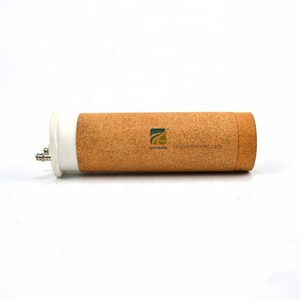
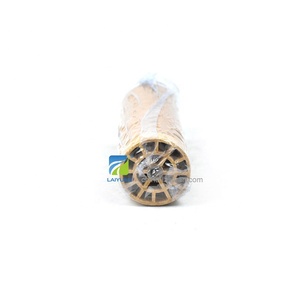
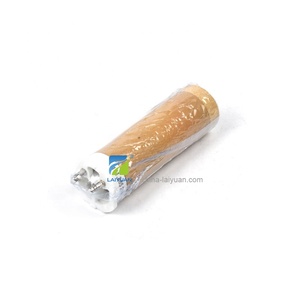


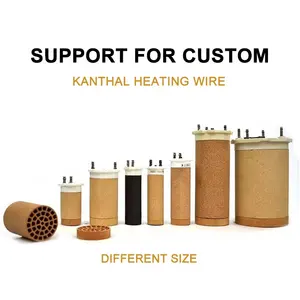











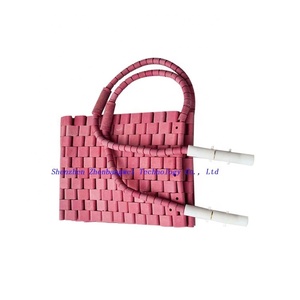


A ceramic heater core is an essential component in the car that helps generate heat inside the vehicle by circulating hot coolant from the engine through a series of pipes and metal fins, ultimately warming the air that passes through it. There are different heater cores based on the vehicle they are used in, their designs, and how they function.
By vehicle type
Automotive heater cores are generally categorized based on the type of vehicle they are used in. For example, car heater cores generate heat in different types of cars, such as sedans, coupes, and hatchbacks. SUV heater cores tend to be larger than those used in sedans or coupe vehicles. This is because they have a larger surface area and higher heat output to accommodate the bigger sizes of the vehicle interior. Similarly, the same concept applies to minivan or light trucks.
By design
Finned tube heater cores are the most common designs. They consist of several tubes that are arranged in parallel and have thin fins that are attached to them. The heater core works by having hot coolant that goes through the tubes. The heat is then transferred from the tubes to the fins, which increases the surface area for heat transfer. The motor fan blows the air that heats up the vehicle through the heater core. This allows for efficient heat transfer and distribution.
Compact heater cores are designed for smaller vehicles or those with limited space for the heating system. They typically have fewer tubes and a smaller surface area than the standard heater cores. The primary function of compact heater cores is to provide sufficient heat for the vehicle without taking up too much space. This allows manufacturers to maximize interior space while still ensuring that occupants stay comfortable in cold weather conditions.
By functionality
The primary function of an electric heater core is to provide cabin heat when internal combustion engines do not operate, such as during engine idle or cold engine operation. However, the design and functionality of electric heater cores can vary depending on the vehicle model and manufacturer. Some electric heater cores are standalone components, while others are integrated into a larger high-voltage coolant heater system used for hybrid and battery-powered electric vehicles.
Inverter heater cores are specifically designed to provide heat to the cabin of a vehicle powered by an internal combustion engine and an electric motor. The electric motor runs the vehicle and is powered by the inverter, which converts DC power from the vehicle's high-voltage battery into AC power. Inverter heater cores are typically located in the cooling system of a vehicle's engine and may use the coolant from the engine to transfer heat used for cabin heating. Some inverter heater cores may have electric heating elements that allow them to heat up faster and provide heat even when the engine is not running.
Some key specifications of ceramic heater cores are as follows.
Sizes
heating-Element cores typically come in compact sizes. For instance, the size might be around 2.25 x 3.5 x 1.75 API. Ultra-Compact cores will have dimensions of about 2 x 2.5 x 1.5 inches or even smaller. The core sizes will vary depending on the vehicle make and model, though.
HVAC
The type of HVAC system that the ceramic core works with will also be a specification. This is important since different vehicles have distinct ways of distributing heat. The core may work with a basic, hybrid, or fully electric HVAC system. Also, the core's capacity to exchange heat will match the particular HVAC design.
Volts
The voltage ratings for ceramic heater cores may differ. It is likely to be 12V for the car to be used in the automotive traffic. However, for vehicles that operate on a different battery system, the volts can be higher. For example, some light trucks may have a 24V ceramic core design.
Connector Features
This specification refers to details of the ceramic heater core wire connector, such as a plug or socket. The connector features match the vehicle's electrical system for a smooth heater installation and function. Connector specifications may include the number of pins and the locking mechanism.
For the ceramic heater core to last in excellent condition, it is essential to perform some maintenance behaviors.
Regular coolant flushes
The primary role of the ceramic heater core in a vehicle is to heat the cabin. It does that by transferring heat from the engine, which the coolant moves around. Therefore, the core needs to be clean in order to function optimally. A vehicle's cooling system can build up debris and mineral deposits over time. By regularly performing coolant flushes, one can prevent buildup in the heater core, thus allowing it to maintain efficient heat transfer.
Cabin air filter replacement
The ceramic heater core works with the cabin air system to provide warm air to the occupants. Thus, warm contaminants also pass through the core. Some of these contaminants can get stuck inside the core, clogging it. Replacing the cabin air filter will prevent the clogging of the heater core by particulate matter. It allows the core to be free-flowing so that it can release dust and dirt trapped inside.
Regular HVAC system inspections
A driving person's routine inspections of the vehicle's HVAC system can help maintain the ceramic heater core. During inspection, a skilled mechanic will check for leaks, clogs, and other damage that may occur to the heater core. Prompt detection of such issues can prevent severe damage from occurring or quickly worsening. Inspecting the HVAC system regularly preserves the integrity of the ceramic heater core and improves its lifespan.
Usage Scenario 1: Automotive industry
Ceramic heater cores are particularly prevalent in the automotive field. In vehicles, the ceramic heater core serves as the interior warm air supply device and as a defroster to quickly melt snow and ice on windows. It also acts as a constant temperature equipment that keeps the temperature of battery components, electronic components, and other parts stable. This ensures the normal working and driving functions of various vehicle parts, effectively protecting the entire vehicle. Meanwhile, hybrid electric cars also need to control the temperature of lithium batteries. Ceramic heater cores also play an essential role in this domain.
Usage Scenario 2: 3D printer
In recent years, with the rapid development of new technologies, 3D printers have also become a crucial application area for ceramic heater cores. A ceramic heater core for a 3D printer can provide uniform heating for the printing nozzle. This can prevent the nozzle from clogging during printing, improve the service life of the nozzle, and enhance the printing quality.
Furthermore, compared to traditional metal heater cores, the ceramic heater core has a better temperature control response, which can meet the more precise temperature control requirements of 3D printers. With the continuous deepening of research and development in this field, more and more different types of ceramic heater cores are applied to 3D printers.
For example, such as the silicon carbide ceramic heater core, which can be used as high-temperature resistant heater core for 3D printers, such as FDM 3D printers, etc. Another example is the boron nitride ceramic heater core, which has been widely used in the field of micro 3D printing, such as the true 3D pen.
Usage Scenario 3: Other industrial applications
Ceramic heater cores are also extensively applied in other industrial fields. For instance, they can be used as heating elements for industrial equipment such as furnaces, reactors, and dryers. Their high-temperature resistance and stable heating abilities can meet the demands of diverse industrial production processes.
In addition, ceramic heater cores also find application in the field of the semiconductor industry. As key heating elements for semiconductor devices, they can provide stable and constant temperature environments for the growth, etching, and oxidation of semiconductor materials. This guarantees the quality and purity of semiconductor materials, as well as the precision of semiconductor devices.
Certain considerations should be taken into account to ascertain what core will fulfill specific needs and requirements.
Application:
Initially, it is crucial to determine the intended application and use of the ceramic heater core. This step is essential, as it will eventually impact and guide other factors, such as the size, power, voltage options, etc. The application can range from use in an automotive industry, manufacturing facilities, warehouses, office spaces, and many more. As discussed previously, different applications require different types and functionalities of ceramic heater cores.
Size and Power:
Size refers to the physical dimensions of the ceramic core heater, whereas power refers to the wattage the core operates at. Both factors are important parameters to check as they determine space availability and energy consumption and costs, respectively. Once the application of the heater core is determined, it is easy to ascertain what size and power would be needed because this is also dependent on the area or application for which the ceramic heater is to be used. For instance, in the case of a small space or area, a low-wattage ceramic heater core would be more than enough to heat up the space, and a large dimension would take up excess space.
Voltage Options:
In simple terms, voltage refers to the amount of electric energy required to perform a specific function. Different heater cores require different voltages to operate, typically in the range of 12V to 240V. It is important to choose the ceramic heater core with the right voltage to ensure safe and optimal performance. For example, a 12V ceramic heater core would be perfect for use in automobiles.
Quality and Standards:
It is always better to opt for a ceramic heater core that meets specific international quality standards. This not only guarantees performance but also promises safety, as it adheres to different prescribed regulations. These cores are usually constructed with high-quality ceramic materials. Amongst the many options available, alumina, zirconia, and silica are some of the most commonly used ceramic materials for heater cores.
Cost and Budget:
Wattage, size, quality, voltage, and material are all factors that impact the overall price of a ceramic heater core. Setting a budget and sticking to it is very important because, due to the many options and variations, it is very easy to lose track and end up choosing something that is out of budget. Therefore, this calls for comprehensive research to be done before selecting the core that is within the budget.
Q1 What are the benefits of using a ceramic heater core in a car?
A1 Ceramic heater cores are more durable than other heater core materials like aluminum or copper. This durability makes it less likely to break or get damaged. Ceramic heater cores also last longer and aren't as easily worn out from constant use. In simple terms, a ceramic heater core in a car will work better and last longer.
Q2 Are there any downsides to ceramic heater cores?
A2 While ceramic heater cores offer many advantages, they also have some downsides. One significant drawback is their fragility. Ceramic materials can break or get cracked if extreme pressure is applied. Also, heater cores made of ceramic are somewhat limited in heating capacity when compared to other materials. Lastly, ceramic heater cores can be pretty expensive, and this may drive up the cost of cars that use them.
Q3 Are all car heater cores made the same way?
A3 No, not all car heater cores are made the same way. Even though the heater core is a mini-radiator, different materials are often used. Copper and aluminum are the most common materials for car heater cores. Aluminum is lighter, and this makes it easier to carry and install, while copper has better heat-transferring abilities.
Q4 How long can a ceramic heater core Last?
A4 With proper care and maintenance, a ceramic heater core can last up to 10-15 years. However, this also depends on factors like the quality of the ceramic, the frequency of use, and the exposure to harsh chemicals or conditions.